Mindfulness-Based Stress Reduction: The Ultimate MBSR Guide
 We all deal with stress on a daily basis, whether we’re old or young, large or small, lofty thinkers or practical doers.
We all deal with stress on a daily basis, whether we’re old or young, large or small, lofty thinkers or practical doers.
Even the most practiced meditator and the yogi who radiates peace experience this inevitable aspect of the human experience.
Reality is the leading cause of stress amongst those in touch with it.
Jane Wagner
It’s inescapable, and it brings with it a host of uncomfortable and distracting symptoms. Stress isn’t just a feeling or a mental state; if you don’t address it, it seeps into every aspect of your life.
One way to cope with stress is through mindfulness-based stress reduction, or MBSR, an eight-week course that teaches how to use mindfulness in daily life. It’s a proven way to help deal with the stressors of daily life. In this article, we’ll explore what MBSR is and what resources are available for people interested in participating in and administering MBSR courses.
Before you read on, we thought you might like to download our three Mindfulness Exercises for free. These science-based, comprehensive exercises will not only help you cultivate a sense of inner peace throughout your daily life but will also give you the tools to enhance the mindfulness of your clients, students or employees.
This Article Contains:
- Symptoms of Stress
- What Is MBSR? A Definition
- Jon Kabat-Zinn’s Work on MBSR
- The 8 Most Popular MBSR Exercises and Techniques
- Yoga and Mindfulness-Based Stress Reduction
- Other Stress Relieving Techniques
- Meditation and MBSR
- MBSR Courses, Teacher Trainings, and Certification Programs
- Mindfulness-Based Stress Reduction Retreats
- The MBSR Workbook
- The Best Free Body Scan and Guided Meditation YouTube Videos
- Other Online Resources
- A Take-Home Message
- References
Symptoms of Stress
According to WebMD, stress can produce the following symptoms:
- Low energy;
- Headaches;
- Upset stomach, including diarrhea, constipation, and nausea;
- Aches, pains, and tense muscles;
- Chest pain and rapid heartbeat;
- Insomnia;
- Frequent colds and infections;
- Loss of sexual desire and/or ability.
Beyond these physical symptoms, stress can also have a big impact on your emotions and general mood.
Stress.org describes a few of the mental or emotional symptoms of mounting stress:
- Difficulty concentrating, racing thoughts;
- Trouble learning new information;
- Forgetfulness, disorganization, confusion;
- Difficulty in making decisions;
- Feeling overloaded or overwhelmed;
- Frequent crying spells or suicidal thoughts;
- Feelings of loneliness or worthlessness;
- Little interest in appearance, punctuality;
- Nervous habits, fidgeting, feet tapping;
- Increased frustration, irritability, edginess;
- Overreaction to petty annoyances.
Looking at these symptoms, it’s clear that stress can reach its hungry tentacles into every nook and cranny of your daily life.
This all seems rather negative, but don’t get too down yet.
“Stressed spelled backwards is desserts.”
The quote above, while humorous and simplistic, is actually onto something. Stress is inevitable in life, this we know. But we should remind ourselves that succumbing to the negative symptoms of stress is not inevitable.
When we treat stress as an opportunity instead of a threat, we can change our mindset and meet the challenge head-on, contributing to our own growth and development instead of throwing up our hands and waiting to be swallowed whole.
So, how do we turn our “stressed” into “desserts?” What can we do to turn times of struggle into opportunities for positive change?
MBSR has answers for us.
What Is MBSR? A Definition
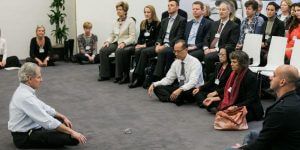
Although it was initially created to aid hospital patients, it has since been used effectively by a wide range of people from all walks of life.
In fact, according to the Center for Mindfulness at the University of Massachusetts, more than 24,000 people have taken advantage of the MBSR program the center debuted in 1979 (Center for Mindfulness, 2017).
MBSR is a flexible and customizable approach to stress reduction. It’s composed of two main components: mindfulness meditation and yoga. Instead of following a script or acting out meticulously described steps, mindfulness is practiced in the manner that best suits the individual (Center for Mindfulness, 2017).
While MBSR is often different for every person in practice, it is based on the same set of principles. The following descriptions are pulled straight from the Center for Mindfulness website:
-
- Making the experience a challenge rather than a chore and thus turning the observing of one’s life mindfully into an adventure in living rather than one more thing one “has” to do for oneself to be healthy;
- An emphasis on the importance of individual effort and motivation and regular disciplined practice of the meditation in its various forms, whether one “feels” like practicing on a particular day or not;
- The immediate lifestyle change that is required to undertake formal mindfulness practice, since it requires a significant time commitment (in the clinic 45 minutes a day, six days a week minimally);
The importance of making each moment count by consciously bringing it into awareness during practice, thus stepping out of clock time into the present moment;
- An educational rather than a therapeutic orientation, which makes use of relatively large “classes” of participants in a time-limited course structure to provide a community of learning and practice, and a “critical mass” to help in cultivating ongoing motivation, support, and feelings of acceptance and belonging;
- A medically heterogeneous environment, in which people with a broad range of medical conditions participate in classes together without segregation by diagnosis or conditions and specializations of intervention. This approach has the virtue of focusing on what people have in common rather than what is special about their particular disease (what is “right” with them rather than what is “wrong” with them), which is left to the attention of other dimensions of the health care team and to specialized support groups for specific classes of patients, where that is appropriate (Center for Mindfulness, 2017).
For more information on these principles, visit the Center for Mindfulness website.
When added to existing medical and/or psychological treatment, MBSR has shown to effectively enhance the results of treatment related to:
- Anxiety and panic attacks;
- Asthma;
- Cancer;
- Chronic illness;
- Depression;
- Eating disorders;
- Fatigue;
- Fibromyalgia;
- Gastrointestinal distress;
- Grief;
- Headaches;
- Heart disease;
- High blood pressure;
- Pain;
- Post-traumatic stress disorder;
- Skin disorders;
- Sleep problems;
- Work, family, and financial stress (Center for Mindfulness, 2017).
With such an impressive list of benefits, it’s hard to argue against giving MBSR a shot, especially since the program does not require an unreasonable amount of time, energy, or resources.
The following section goes into more detail about how MBSR was established and what it entails.
Jon Kabat-Zinn’s Work on MBSR
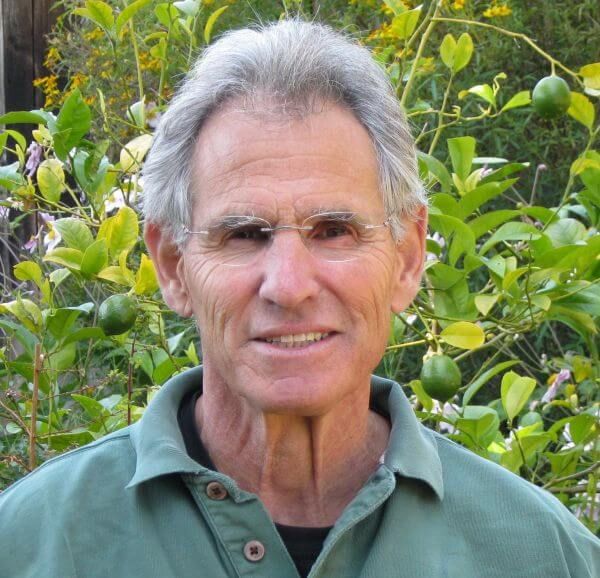
He took a modern, scientific-based perspective to traditional Buddhist principles of mindfulness and meditation and developed a flexible approach to reducing stress.
MBSR was first put into practice at the Stress Reduction Clinic at the University of Massachusetts Medical School, where Jon Kabat-Zinn was established as a professor of medicine.
At the time, the program Kabat-Zinn founded was called the Stress Reduction and Relaxation Program, which was later changed to mindfulness-based stress reduction (Center for Mindfulness, 2017).
With the name change came a shift in perspective, from emphasizing the Buddhist foundations to making the program more secular and inviting to people from all systems of belief (Wilson, 2014). Kabat-Zinn viewed mindfulness as a practice that every human has the capacity to engage in, and MBSR promotes this perspective by allowing for individualization (Center for Mindfulness, 2017).
Kabat-Zinn’s work with MBSR contributed to a movement of acceptance and awareness in an environment of seemingly unending stress, but his vision of mindfulness for all may be his enduring legacy.
There are virtually no barriers to the practice of mindfulness or yoga. If you have a mind, you can practice mindfulness, and if you have a body that is capable of movement, you can practice yoga.
This is one of the best things about MBSR: it’s accessible for just about everybody.
So, without further ado, let’s jump in and explore MBSR!
The 8 Most Popular MBSR Exercises and Techniques

Mindfulness Techniques
As expected, mindfulness is heavily featured in MBSR techniques. While it’s easy to think of mindfulness as a certain state of mind, there are actually several different ways to practice or engage in mindfulness, with varying areas of emphasis.
1. Focus Mindfulness
Practicing mindfulness with an emphasis on focus involves looking inward to observe what is happening in your mind.
It can be described as “eyes on the road” in that there is a singular focus on one experience.
To keep your focus, it can be helpful to use a particular stimulus (like breath) to keep yourself grounded in the moment (The Mindful Word, 2012).
2. Awareness Mindfulness
Unlike focusing, practicing awareness emphasizes the external instead of the internal. Awareness focuses on the mind but from an outside perspective. When trying mindfulness from an awareness angle, try to view your mental activity as if it belonged to someone else.
In general, awareness mindfulness can be described as looking at your thoughts and feelings from outside of your usual self-centered experience and observing your mind as a stream of consciousness without attaching judgment.
For an example of a simple awareness exercise, use the following guide:
“Start by taking your mind inwards for a moment by focusing on the breath. Take a few gentle deep breaths, from the belly. In and out. Relax. Let go. Continue to breathe for as long as you wish.
Now take your mind outwards. See your thoughts, feelings, moods, and sensations as objects floating down a stream, coming into view and vanishing from sight. Simply watch without judgment or analysis. Just watch them pass.
Now pluck an object from the stream and focus on it. Let the other sensations and thoughts go by in the background. Note any new thoughts or feelings that arise from observing this object. Sit with these thoughts and feelings for a moment.
Whenever you’re ready to leave this object behind, simply deposit it on a leaf and let it float downstream”
(The Mindful Word, 2012).
3. Shifting from Focus to Awareness
For switching from focus mindfulness to awareness mindfulness, try these tips:
Watch the stream of consciousness, dispassionately
Pluck something from the stream and deliberately focus on it (e.g. a dream image, a memory, a painful feeling).
Mindfulness Exercises

1. The Breath
The exercise described above is one such exercise that facilitates mindfulness by focusing on the breath.
2. Body Scan
Lie with your back on the floor or a bed and close your eyes.
Move your awareness through your body, focusing on one area at a time.
Stop whenever you find an area that is unusually tight or sore and focus your breath on this area until it relaxes.
You can use a calm and healing visualization at this point as well (e.g., a ball of white light melting into the sore spot).
For an extended guide to practicing the body scan, click here.
3. Object Meditation
Hold an object that is special or interesting to you. Focus all of your senses on it and note the information your senses feed back to you, including its shape, size, color, texture, smell, taste, or sounds it makes when manipulated.
4. Mindful Eating
Like the previous exercise, this exercise can be completed with all your senses while you focus on eating a particular food, like dark chocolate or a raisin.
Eat slowly, utilizing all five senses: smell, taste, touch, sight, and even sound.
5. Walking Meditation
Take a leisurely walk at a gentle but familiar pace. Observe how you walk and pay attention to the sensations in your body as you walk.
Notice how your shoulders feel (Tight? Loose? Strong?), the sensations in your feet as they meet the ground, the swing of your hips with each stride. Match your breathing to your footsteps.
6. Mindful Stretching
You can practice mindful stretching with any set of stretches that you like, but if you want a guided practice you can give yoga a try (more on that in the next section).
Awareness Exercises
The Mindful Word also describes two awareness exercises. If you’d like to try an exercise in improving your awareness, try one of the following exercises.
1. Simply Watching
This exercise involves only you and your thoughts. Instead of focusing on your thoughts as they rise to the surface, let them pass by like clouds in the sky.
Refrain from attaching value judgments to your thoughts (e.g., “I’m terrible for thinking that,” or “What a kind thought! I am a good person.”).
If it helps, you can identify or even vocalize each thought, feeling, or sensation as they come up (i.e., “sore neck, pizza, best friend, anger, tingling, empty stomach, pizza again, grandma, I miss her”) (The Mindful Word, 2012).
2. Worry or Urge “Surfing”
Approach your thoughts and feelings like you’re surfing on a wave.
Turn your awareness to the warning signs of a negative feeling like worry, anxiety, or anger approaching.
Imagine the negative emotion coming at you like a wave that gets bigger and bigger as it approaches, crests as it reaches you, and falls as it moves away.
Imagine riding that wave as it passes, and let the negative emotion go with it. Make sure to celebrate your ability to let the emotion go, but acknowledge that more will come eventually and remember to “ride the wave” again when they do (The Mindful Word, 2012).
For more detailed explanations of each exercise, visit The Mindful Word website here.
Yoga and Mindfulness-Based Stress Reduction
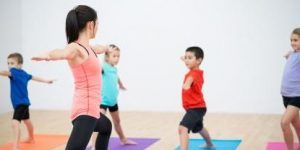
Several studies have shown that practicing yoga can benefit people from all walks of life.
For example, a study of mental health professionals showed that practicing yoga significantly reduced work-related stress and enhanced their ability to adapt and react to stress (Lin, Huang, Shiu, & Yeh, 2015).
Yoga can also help school employees enhance their levels of calmness, comfort, and cheerfulness, as well as decrease their cognitive and body stress (Nosaka & Okamura, 2015).
Veterans suffering from post-traumatic stress disorder (PTSD) can also benefit from yoga. Yoga has proven effective for veterans in improving PTSD-related symptoms and quality of sleep (Staples, Hamilton, & Uddo, 2013).
Female veterans, in particular, showed a reduction of PTSD-related symptoms and substance abuse behavior when they participated in a 12-session yoga treatment (Reddy, Dick, Gerber, & Mitchell, 2014).
Even children can enjoy the benefits of yoga. One study found that a 10-week yoga class decreased cortisol, a stress-related hormone, in second-graders (Butzer et al., 2015). It also contributed to a decrease in behavior problems in second- and third-graders.
Another study showed that yoga can decrease academic-related stress in children (Venkataramana, Poomalil, & Shobhasree, 2008).
According to Kabat-Zinn, there are seven foundational attitudes that are integral to the practice of mindfulness for the purpose of stress reduction:
- Non-judgment: intentionally assume the mind frame of an impartial witness;
- Patience: a form of wisdom that allows us to give ourselves space and time to have our experiences;
- A beginner’s mind: a mindset that is willing to experience everything as if it is the first time;
- Trust: having trust in yourself and honoring your own knowledge and experience;
- Non-striving: an attitude that eschews the usual state of trying to get somewhere or accomplish something in particular, but encourages the practitioner to simply be;
- Acceptance: seeing things as they really are in each moment, rather than as you would like them to be or as the worst interpretation may present; in other words, taking things as they come;
- Letting go: intentionally releasing control and allowing ourselves to fully participate in our experience.
For a guided yoga practice, see this video from Dr. Lynn Rossy.
If you liked the last video and want more, here’s part two of Dr. Rossy’s series.
If you’re more interested in reading about how yoga contributes to MBSR, here are three book recommendations:
- Mindful Yoga, Mindful Life: A Guide for Everyday Practice by Charlotte Bell
- Functional Anatomy of Yoga by David Keil
- The Science of Yoga by William J. Broad
Other Stress-Relieving Techniques

Pets can be excellent guards against fear, stress, and anxiety.
If you don’t have pets, try visiting a friend’s pets or making a shelter dog’s day by taking them for a walk and having a bonding session. Be sure to check with the shelter staff about the dog’s personality and friendliness before getting too close and cuddly, though.
If you’re not a big fan of animals, fret not! There are many more ways to reduce stress. You can try:
- Getting together with friends to get your mind off of your worry or anxiety. Hosting a board game or card game night is a great way to try this method;
- Taking a long, hot bath, if you’re the kind who enjoys baths! Bonus stress-reduction points if you use candles, bubbles, or take a glass of wine in with you;
- Taking a leisurely walk through an interesting environment;
- Watching a funny movie or T.V. show;
- Rereading a favorite book;
- Playing a video game (another one of my personal favorites);
- Cleaning out a closet or spare room. Sometimes getting rid of a little bit of clutter can brighten up your day;
- Listening to relaxing music. This one is up to interpretation—if German death metal relaxes you, feel free to indulge! Jack Johnson is my go-to for relaxing music;
- Simply sitting in the sun—just don’t forget to wear sunscreen.
This list provides several potential stress-reducing activities, but it is by no means complete. Do whatever it is that takes you out of your negative thoughts and into a calmer place.
Meditation and MBSR

However, it may be the closest thing to it.
When we meditate, we take responsibility for our mental states and learn to alter our reactions to the experiences we have in order to produce more positive outcomes (Wildmind, 2007). Regularly practicing meditation facilitates awareness of our thought patterns, our emotions, and how we experience stress. Once we have become aware of problematic patterns or processes, we have the ability to change them.
How to Practice Meditation to Reduce Stress
Now, we’ll examine how to actually practice meditation with the aim of reducing stress.
1. Meditation Posture
Your first concern when beginning a meditation practice is figuring out how to position your body.
You want to be comfortable, but you also want to be sure your posture is contributing to the right frame of mind.
Meditation can be practiced sitting, standing, crouching, kneeling, or in just about any other position. The position does not matter as much as the fundamentals.
To make sure your posture is conducive to successful meditating, refer to this list:
- Your spine should be upright, following its natural tendency to be slightly hollowed;
- You should neither be slumped nor have an exaggerated hollow in your lower spine;
- Your spine should be relaxed;
- Your shoulders should be relaxed, and slightly rolled back and down;
- Your hands should be supported, either resting on a cushion or on your lap so that your arms are relaxed;
- Your head should be balanced evenly, with your chin slightly tucked in;
- The back of your neck should be relaxed, long, and open;
- Your face should be relaxed, with your brow smooth, your eyes relaxed, your jaw relaxed, and your tongue relaxed and just touching the back of your teeth (Wildmind, 2007).
Preparation:
Next, prepare your breath. This exercise does not manipulate the breath in any way, but it can help to take a few deep breaths to prepare for the meditation.
Stage One:
After you are prepared, move into the first stage by counting your breath. Do not attempt to change your breath, just count.
Use this counting method: one inhale, one exhale, count.
Continue counting your breath for about five minutes. If you find your mind wandering, gently bring it back to the sensation of breathing.
Stage Two:
The next stage of breathing meditation is essentially the same as the first stage, except you count your inhales instead of your exhales. This is a slight change that can lead to a distinctly different experience.
For this stage, use this counting method: count, one inhale, one exhale.
As with the previous stage, count for at least a few minutes, gently bringing your mind back to your breath when it inevitably gets mischievous.
Stage Three:
Instead of counting, simply allow your breath to come naturally, and pay attention to the sensations of breathing. Focus specifically on the transitions from inhale to exhale and back again, since these transitions are when you are most likely to get distracted. Try to see breathing as a continuous process rather than a series of inhales and exhales.
Stage Four:
This stage calls for a narrowing of your awareness. Try to focus on how you are feeling as you breathe. Notice the tiny sensations that come with each breath, like the slight breeze on your lip from each breath, or the feel of air moving down your throat and into your lungs (Wildmind, 2007).
Meditation Exercise for Countering Anger
Metta Bhavana, or loving-kindness meditation, can be a useful tool to counter chronic anger. It involves learning to cultivate patience, kindness, acceptance, and compassion for ourselves.
You can prepare for practicing loving-kindness meditation by cultivating emotional awareness.
- Sit quietly and bring your awareness to your body, relaxing each muscle as you go;
- Bring your awareness to your heart and see what emotions are there;
- Pay attention to your thoughts if you need clues as to the emotions you are experiencing;
- Try to reserve judgment of yourself;
- Don’t berate yourself for feeling negative emotions. Try to be kind and patient with yourself.
To begin loving-kindness meditation, assume your usual meditation posture. You will work through this meditation in five stages.
- In the first stage, you cultivate loving-kindness toward yourself. Try to become aware of the emotions you are feeling, and, as noted above, do not judge them. Instead, show yourself compassion. Open your heart to yourself and accept what you are feeling. Extend a hand of friendship to yourself, and wish yourself well;
- In the second stage, expand this loving kindness to a good friend. Decide on the friend beforehand, so as not to waste any time during the meditation. If it helps, imagine that your friend is going through a difficult time and needs your support. Show them compassion and accept them for who they are;
- The third stage expands loving-kindness to a “neutral” person. Think of a person that you do not have an emotional connection with, someone who you neither like nor dislike. Extend your loving-kindness to this person. Wish them well, and offer them your acceptance, compassion, and kindness;
- The fourth stage is perhaps the most difficult stage, as it calls for cultivating loving-kindness for someone you do not already have kind thoughts or feelings toward. Think of someone who you have a difficult relationship with or someone you actively dislike. Now, begin the hard work of extending loving-kindness to this person. Try to let go of your tendencies to think badly of them, and wish them well. You can use a wish like, “May they be well, may they be happy, may they be free from suffering,” or any other wish you are comfortable with, but it must be positive (Wildmind, 2007);
- The fifth stage is the culmination of this practice. In this stage, we extend our loving-kindness to all sentient beings. Widen the circle of your loving-kindness to touch every being in the known universe. You can start with yourself, your friend, the neutral person, and the difficult person. Think of all four of you together, and wish all of you well. Avoid “playing favorites” with your friend, and try to wish all of you happiness and joy.
From here, widen your circle to include more friends, more neutral people, and more difficult people. Widen the circle again to include all friends, all neutral people you know, and all difficult people you know.
Continue this process until your circle includes all sentient beings, and wish for happiness and joy for all of them. One wish covering all sentient beings that I have heard is: “May all beings everywhere be happy and free.”
Feel free to use this wish, or invent your own to make it feel more personal.
MBSR Courses, Teacher Trainings, and Certification Programs

Instead, we’ll provide an overview of the resources available to those interested in MBSR.
MBSR Courses
Besides the flagship course at the Center for Mindfulness where MBSR was developed, there are other opportunities to participate in MBSR.
To find an in-person MBSR course near you, use the Center for Mindfulness’ search feature at this link. This search reveals MBSR teachers near you that are certified by the Center for Mindfulness to offer their MBSR course.
If you cannot find a certified teacher in your area or would like the convenience of taking the course online, there are two options outlined below.
1. Sounds True Course
The Sounds True website offers an online Mindfulness-Based Stress Reduction course that follows the same method as the Center for Mindfulness, with the curriculum developed by Jon Kabat-Zinn.
The course is offered over eight weeks and is facilitated by Dr. Saki F. Santorelli, the director of the Stress Reduction Clinic and executive director of the Center for Mindfulness in Medicine, Health Care, and Society at the University of Massachusetts Medical School, along with Florence Meleo-Meyer, a longtime teacher of MBSR and member of the executive leadership team at the Center for Mindfulness (Sounds True, 2015).
The course is split into the following sections:
Orientation
The first session provides an overview of the history and development of MBSR.
Week One
The first week gives participants an overview of the course and presents the theory and evidence behind the idea of mind-body medicine. Participants will be introduced to some of the basics of MBSR, including mindful eating, mindful breathing, and the body scan.
Week Two
Week two opens participants up to the examination of their perceptions, assumptions, and the perspective they use to interact with the world around them. The session will revisit the body scan exercise and explore how participants react to stress.
Week Three
The third week brings a greater focus on the body, with hatha yoga, sitting meditation, and walking meditation. This session encourages participants to learn how to be present in the moment, as well as how to maintain this presence in their daily life.
Week Four
In week four, participants will learn about how the body reacts to stress and how mindfulness can mitigate or reverse these effects. They will also be introduced to strategies for applying a mindfulness practice to stressful situations.
Week Five
This session marks the halfway point in the course and expands on the concepts and techniques participants have learned so far. Participants will be encouraged to think about the situations in which they often get bogged down in unhealthy or self-defeating patterns of thought, emotion, and/or behavior. Additionally, they will be walked through some strategies for applying mindfulness to these situations before these self-defeating reactions set in.
Week Six
The focus of week six is on resilience, or productive coping strategies that course participants can put into effect when they face challenges. The session also covers interpersonal mindfulness, which applies to person-to-person communications, situations that can be accompanied by stress, anxiety, or other difficult emotions.
At over six hours, this session is longer than the others, and it provides participants with an opportunity to put the techniques they have learned into practice in a variety of situations.
Week Seven
The second-to-last week is all about how to integrate the practice of mindfulness into everyday life. Participants will learn how to maintain their growing practice and how to commit to non-judgment, awareness, and presence in the moment.
Week Eight
The program closes with a review of the course content, a focus on how to carry on practicing mindfulness, and an overview of the resources and support available for course graduates as they continue with their lives.
The course has a regular price tag of $297, although at the time of this posting, the course is offered at a special price of $197. To read reviews of the course, see the details of their 100% satisfaction guarantee, or to learn more about this course, visit the website at this link.
2. Palouse Mindfulness Course
Another online MBSR course is offered through Palouse Mindfulness by Dave Potter, a certified MBSR instructor who trained at the University of Massachusetts Medical School.
This course is modeled on Kabat-Zinn’s work, but the week-to-week content is not an exact copy of Kabat-Zinn’s work. To see a description of each session, follow this link and navigate through the session outlines on the left side of the page.
The main difference between the Palouse Mindfulness course and the Sounds True course is that this course is self-directed. As such, there are no costs associated with taking this course, although many of the potential benefits are the same.
To learn more about this course, see the introduction here or read the FAQ section here.
3. Other Online Mindfulness Courses
This post provides links to other mindfulness courses that you can take online to learn more about practicing mindfulness.
Although these are not specifically MBSR programs, these courses can be a great way to add mindfulness knowledge and techniques to your repertoire.
MBSR Training and Certification Programs
The Center for Mindfulness also offers MBSR training for professionals who want to learn how to lead an MBSR course of their own.
MBSR Teacher Education & Certification
This program consists of six courses, usually offered over 36 months, and culminates in an MBSR Teacher certification from the Center for Mindfulness.
The courses include MBSR in Mind-Body Medicine, MBSR Fundamentals, MBSR Practice Teaching Intensive, MBSR Group Supervision, MBSR Individual Supervision, and MBSR Teacher Certification.
Each course carries a different price tag. Some tuition assistance is offered, which you can learn about here.
Mindfulness-Based Stress Reduction Retreats
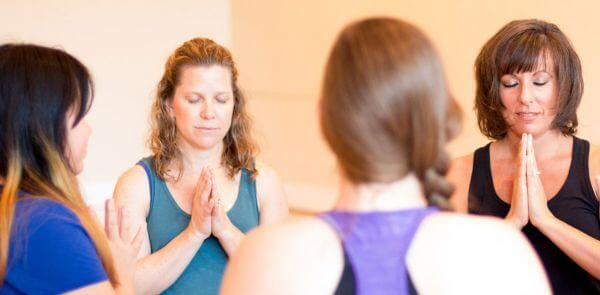
Several such retreats are offered, some for MBSR teachers and teachers in training only, and some for anyone who is interested in practicing MBSR.
- The Awareness and Relaxation Training website also provides information on upcoming MBSR retreats, which you can peruse here. These retreats are led by Steve Flowers, director of the Mindful Living Program at the Enloe Medical Center, and Dr. Bob Stahl, founder of several MBSR programs in the Bay Area and current director of the programs three California hospitals. Both of these professionals completed training with Jon Kabat-Zinn. The retreats are offered to a variety of health care professionals, including physicians, nurses, psychologists, and counselors.
- The Shambhala Mountain Center offers several MBSR-based retreats, which take place near the Rocky Mountains in Colorado. The retreat aims to provide a safe and nurturing environment where retreat attendees can find support and guidance from MBSR teachers and deepen their meditation practice. For a list of upcoming retreats, check the website.
The MBSR Workbook
A Mindfulness-Based Stress Reduction Workbook by Dr. Bob Stahl and Dr. Elisha Goldstein is a great resource for engaging in MBSR. This workbook is based on Kabat-Zinn’s work on MBSR and offers readers a method for addressing the stress they experience in their daily life.
If a course or retreat sounds like a little too much for you to take on right now, this workbook is a great way to practice MBSR and mindful meditation at your own pace.
The Best Free Body Scan and Guided Meditation YouTube Videos
If you are already familiar with MBSR program content or would like to jump right into the practice, these YouTube videos may be just what you are looking for.
Body Scan Videos
This guided body scan exercise is offered by meditation coach Greg de Vries and has more than 930,000 views on YouTube. It also includes an introduction to the body scan beforehand.
The video below is a popular 30-minute guided meditation that moves into the practice after a short introduction from narrator Michael Sealey. This meditation is also available as a downloadable track from Michael Sealey’s website and from iTunes.
Other Guided Meditation
YouTube channel TheHonestGuys offers a guided meditation video on YouTube intended to provoke a deep state of relaxation. This video is an extremely popular one with more than 14 million views. The video clocks in at a little over 18 minutes and includes relaxing visuals and nature sounds as well as narration.
If you’re trying to settle down for a night of restful sleep, the guided meditation for sleep from Jason Stephenson may be perfect for you. This video, described as “floating among the stars,” layers Stephenson’s soothing voice over a visual of twinkling stars and peaceful piano music.
At just over an hour, this video provides ample opportunity to float off to sleep, and the 6 million views suggest that it has helped many viewers drift into a peaceful rest.
If you enjoyed Michael Sealy’s body scan, you may like his guided meditation video for detaching from overthinking. This video is another popular one with more than 16 million views, and it is also available to download from his website. This video is specifically intended for those struggling with anxiety, depression, Obsessive-Compulsive Disorder (OCD), or other conditions involving persistent overthinking and negative thoughts.
Other Online Resources
To learn more about other MBSR resources, visit the University of Massachusetts Center for Mindfulness website. This institute provide excellent resources for those interested in practicing and studying MBSR.
The Mindfulness Programs website also offers great content and information about MBSR. You can find this website here.
Finally, the web page on the MBSR workbook includes a list of several resources for those interested in MBSR. Check it out.
A Take-Home Message
We all experience stress in our daily lives, and sometimes it feels overwhelming. While there are many ways to address this abundance of stress, mindfulness is one that carries extra benefits.
Mindfulness meditation not only addresses current stress, but it can also help you defend against future stress, creating a deep and lasting sense of peace. It can even improve physical measures like blood pressure and heart rate.
As we often end our pieces that are about the benefits of mindfulness practice, I will leave you with this thought: What’s the harm in giving it a try?
Happy meditating!
Have you experienced any benefits from practicing mindfulness? Have you given one of these MBSR courses a shot? Would you consider attending a mindfulness course or a silent retreat? Let us know in the comments!
We hope you enjoyed reading this article. Don’t forget to download our three Mindfulness Exercises for free.
- Butzer, B., Day, D., Potts, A., Ryan, C., Coulombe, S., Davies, B., & Khalsa, S. B. S. (2015). Effects of a classroom-based yoga intervention on cortisol and behavior in second and third-grade students: A pilot study. Journal of Evidence-Based Contemporary & Alternative Medicine, 20, 41-49.
- Center for Mindfulness in Medicine, Health Care, and Society (2017). Mindfulness-based programs. Retrieved from http://www.umassmed.edu/cfm/mindfulness-based-programs/
- Center for Mindfulness in Medicine, Health Care, and Society (n.d.). Retrieved from https://www.umassmed.edu/cfm
- Kabat-Zinn, J (2013). Full catastrophe living: Using the wisdom of your body and mind to face stress, pain, and illness. New York, NY: Bantam Dell.
- Lin, S., Huang, C., Shiu, S., & Yeh, S. (2015). Effects of yoga on stress, stress adaption, and heart rate variability among mental health professionals—A randomized controlled trial. Worldviews on Evidence-Based Nursing, 12, 236-245.
- Mindfulness Programs (n.d.). Retrieved from http://www.mindfulnessprograms.com
- Nosaka, M., & Okamura, H. (2015). A single session of an integrated yoga program as a stress management tool for school employees: Comparison of daily practice and nondaily practice of a yoga therapy program. The Journal of Alternative and Complementary Medicine, 21(7), 444-449.
- Online Mindfulness-Based Stress Reduction (n.d.). Retrieved fromhttps://palousemindfulness.com
- Reddy, S., Dick, A. M., Gerber, M. R., & Mitchell, K. (2014). The effects of a yoga intervention on alcohol and drug abuse risk in veteran and civilian women with posttraumatic stress disorder. The Journal of Alternative and Complementary Medicine, 20, 750-756.
- Resources (n.d.). Retrieved from http://mbsrworkbook.com/resources/
- Sounds True: Waking Up the World (n.d.). Retrieved from www.soundstrue.com
- Staples, J. K., Hamilton, M. F., & Uddo, M. (2013). A yoga program for the symptoms of post-traumatic stress disorder in veterans. Military Medicine, 178(8), 854-860.
- The Mindful Word. (2012, April 22). MBSR: Mindfulness-based stress reduction exercises. Retrieved from http://www.themindfulword.org/2012/mbsr-mindfulness-based-stress-reduction/
- The Mindful Word (n.d.). Retrieved from www.themindfulword.org
- Venkataramana, H. L., Poomalil, S. N., & Shobhasree, T. (2008). Effect of yoga on academic stress of high school students. Social Science International, 24, 89-97.
- Wilson, J. (2014). Mindful America: The mutual transformation of Buddhist meditation and American culture. New York, NY: Oxford University Press.
- UCSD Center for Mindfulness (n.d.). Retrieved from http://mbpti.org/
- Wildmind Meditation (n.d.). Retrieved from www.wildmind.org
Let us know your thoughts
Read other articles by their category
- Body & Brain (49)
- Coaching & Application (57)
- Compassion (26)
- Counseling (51)
- Emotional Intelligence (24)
- Gratitude (18)
- Grief & Bereavement (21)
- Happiness & SWB (40)
- Meaning & Values (26)
- Meditation (20)
- Mindfulness (45)
- Motivation & Goals (45)
- Optimism & Mindset (34)
- Positive CBT (28)
- Positive Communication (20)
- Positive Education (47)
- Positive Emotions (32)
- Positive Leadership (18)
- Positive Parenting (4)
- Positive Psychology (33)
- Positive Workplace (37)
- Productivity (16)
- Relationships (46)
- Resilience & Coping (36)
- Self Awareness (21)
- Self Esteem (38)
- Strengths & Virtues (32)
- Stress & Burnout Prevention (34)
- Theory & Books (46)
- Therapy Exercises (37)
- Types of Therapy (64)
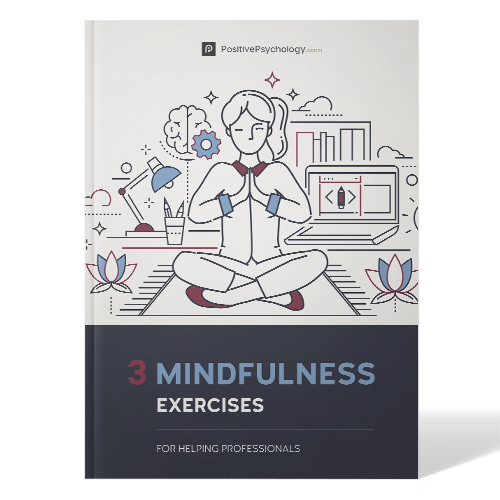

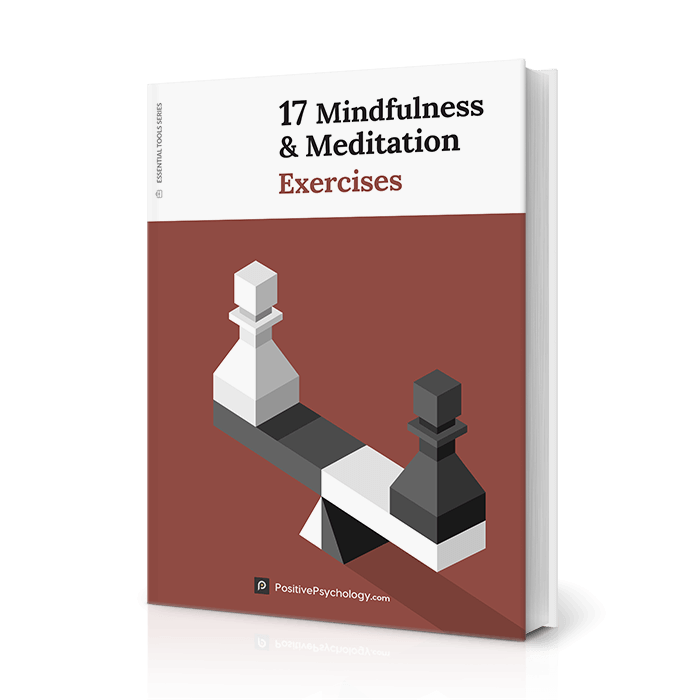
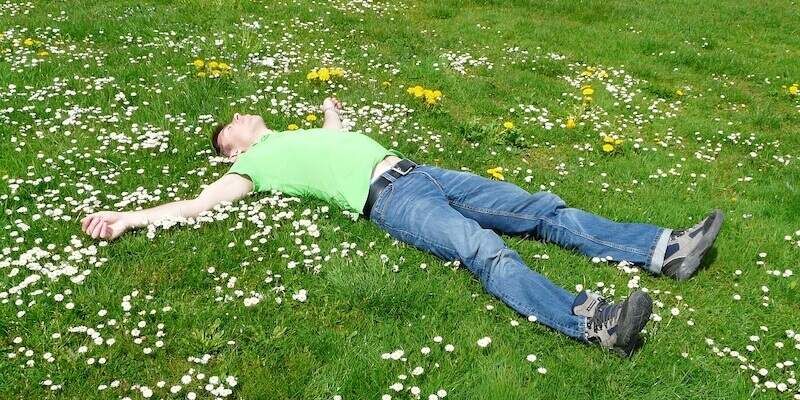


What our readers think
Very interesting article on stress reduction. As stress creates a lot of problems and dealing with it becomes difficult. Thank you for sharing.
Hi, Thank you for this article which I gained alot from. However, I dont understand the difference in the counting/breathing pattern btwn Stage 1 and Stage 2 of 1. Meditation Posture above. I’ve followed the steps and tried practicing it but the pattern is the same. I’d be grateful for more information. Thank you.
Hi Ruth,
Glad you enjoyed the post. It’s a very subtle difference between Stage 1 and 2 which you can read about here and here, respectively. It’s difference between counting the out-breaths (Stage 1) versus counting the inhalations (Stage 2).
Hope this helps!
– Nicole | Community Manager
Good information. I know this is an older article, but a lot of your links do not work.
Hi Emily,
Glad you enjoyed the post. We are currently refreshing all the links in our older posts, so this should be fixed soon. 🙂
– Nicole | Community Manager
This article has helped to relieve stress and anxiety. Thank you
Phenomenal article! I’m taking a meditation based course at Michigan State University where we’re learning about mindfulness based stress reduction and how it affects the brain. This article a great supplement for everything we’re learning in class!
when was this article written? Thank you in advance 🙂